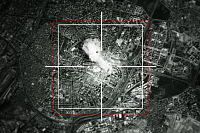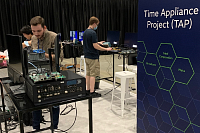In our recent Data Center Blogs we identified the key drivers for the growth in the Data Center market (click here) and the challenges this is bringing to Engineers with regards to the verification of applications (click here).
One of the applications highlighted was the virtualization of 5G networks, where Network Operators are partnering with Virtual Network Function (VNF) vendors to virtualise their network and run their 5G core on public data centers to benefit from their high speed infrastructure.
A recent example of this is a large US telecoms operator who decided to move many of its 5G core network functions to a public data centre. They partnered with a Virtualised Network Function (VNF) vendor to deliver much of their 5G software-defined and virtualisation capabilities. In this delivery partnership a key aspect was the sharing of risk between the operator and VNF vendor with regards to network performance and therefore they were confronted with a large verification challenge for the applications needing to be deployed on the 5G network.
To verify the performance of these applications they needed to see the effects and impact of the network conditions running between the operator’s network segments and the Cloud data centre. In particular they wanted to verify the effects of network impairments typical of a 5G network such as latency and packet loss, simultaneously on multiple network flows. This insight would provide certainty that on deployment of their technology into the network it would not have a negative impact on the end user experience.
The vendor knew they wanted to carry out testing in their lab long before they went into the live network but quickly encountered two problems. The first problem was that typically data centre connections are 100GbE. They were testing a variety of L2 to L4 flows, none of which exceeded 10GbE, so high throughput was not needed, but running the applications over a 100GbE connection was. In fact the customer needed a high port density more to enable the testing of simultaneous flows, than they needed raw throughput but didn’t want to have to purchase multiple machines to fulfil their testing needs.
Secondly the customer needed to model a 5G network and get guidance on the values for impairments such as latency, packet loss and jitter, representative of those found in a 5G network and these were not easily found. This was impacting how quickly they could undertake their testing as would require research before getting started.
It was at this point that Calnex and our partner Spirent were able to help. The Spirent Network Emulator (SNE) powered by Calnex technology provided a multi-port 100GbE solution.
Providing up to eight 100 GbE interfaces and any port to any port functionality the vendor was able to set-up a variety of L2 to L4 flows and test them over an emulated 100GbE connection. This combined with Spirent’s ability to capture key data points about 5G networks we were able to model a typical 5G network for the vendor to integrate to their testing enabling them to start their testing activities earlier than they had anticipated.
The net result of this was a faster and more successful integration of the vendors VNF solution successful performance risk mitigation for both the vendor and telecoms operator and ultimately the delivery of great quality of service for the end user ensuring customer satisfaction.
To see the VNF test use case discussed in action on the SNE visit our You Tube page here SNE 100G VNF Demo Video or for further information on SNE visit our network emulation use cases.
Peter Whitten
Business Development Manager
Related product: Calnex SNE






































































